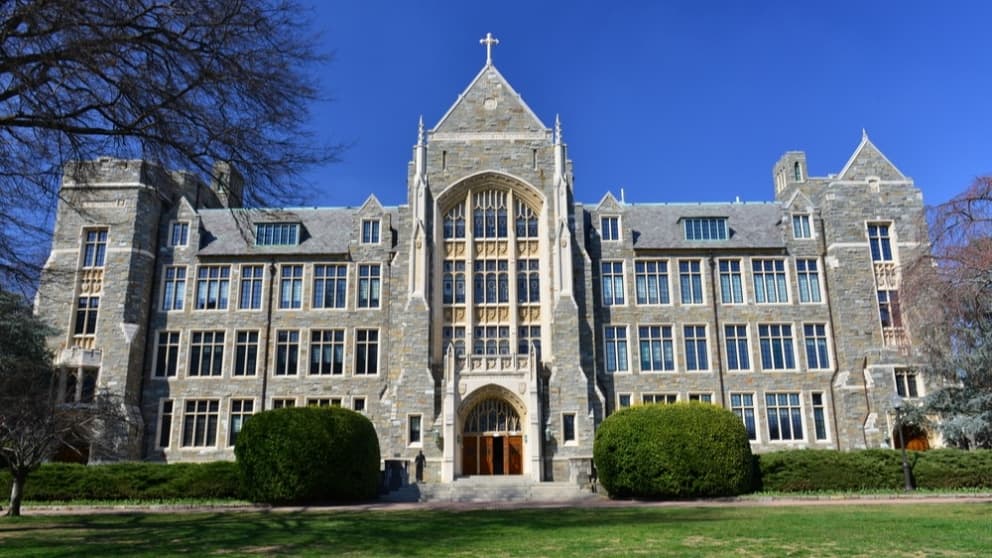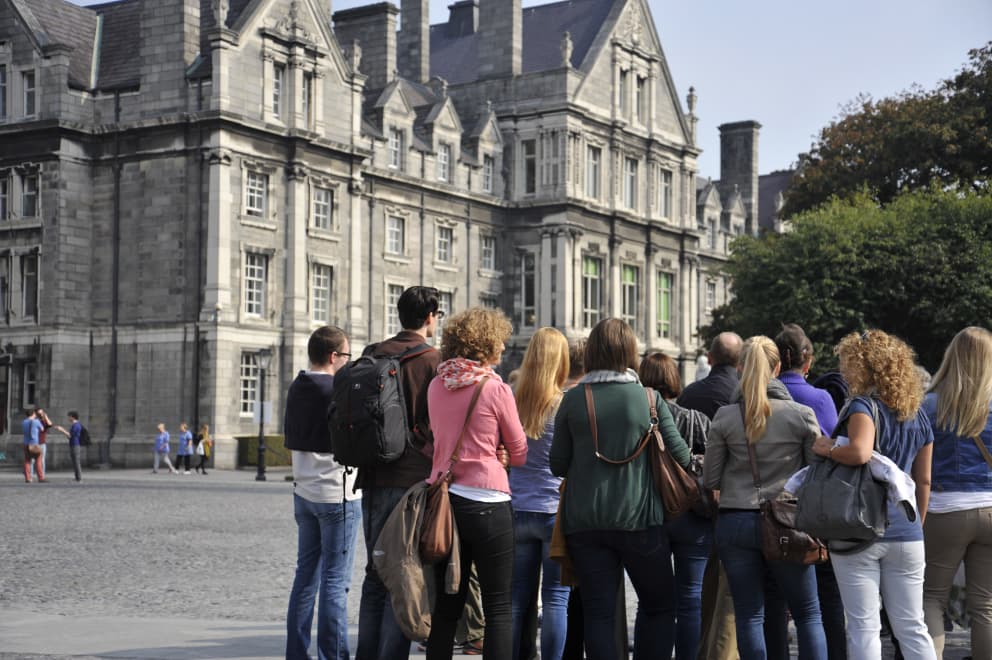Georgetown University's Acceptance Results for the Class of 2029


Arkesh P.
Chief Operating Officer
Summary
Georgetown University’s overall acceptance rate for the Class of 2029 was 12%, reflecting sustained competitiveness amid a slight rise in applications. Early Action applicants experienced an 11% admit rate, slightly lower than the 12.3% Regular Decision rate, indicating no statistical advantage for early applicants. These results mirror recent years, where overall admission rates have consistently hovered near the 12% mark.
Below is a detailed breakdown of the new numbers with insights to help prospective applicants better understand Georgetown's evolving admissions landscape.
Class of 2029 Overview
| Number of Applications | Accepted Students | Acceptance Rate | |
|---|---|---|---|
| Early Action | 8,254 | 917 | 11% |
| Regular Decision | 18,546 | 2,283 | 12.3% |
| Overall | 26,800 | 3,200 | 12% |
Key Trends and Insights
- The acceptance rates have not changed significantly from last year.
- Total applications rose slightly, up to 26,800 compared to 26,170 last year.
- Total EA applications receded slightly, down to 8,254 this year, from 8,600 last year.
Broader Admissions Trends:
- Consistently Competitive Admissions Landscape: Georgetown remains highly competitive, with overall acceptance rates hovering at or slightly above 12% for the past three years.
- EA Advantage: Unlike early-round admissions at many other top universities, EA acceptance rates at Georgetown currently don't offer students a statistical advantage, with EA acceptance rates hovering roughly a point below RD acceptance rates over the past three years.
- Fluctuations Influenced by External Factors: Acceptance rates and application totals can vary due to external influences such as policy changes, global events (e.g., COVID-19), or targeted recruitment efforts. For example, Georgetown does not currently accept the Common app but leaders there recently announced that Georgetown will begin accepting the Common App after next year's application cycle, in addition to its current application, for applicants to the Class of 2031 — a development which could result in the school receiving more applications in the future.
Georgetown remains highly competitive. Prospective applicants should seek to demonstrate exceptional achievement in learning, service, and leadership while showcasing their genuine interest for attending Georgetown.
Georgetown's Regular Decision Acceptance Results
Regular Decision Results: Class of 2029 vs 2028
| Admission Round | Class of 2029 | Class of 2028 | % Change |
|---|---|---|---|
| Applications Received | 18,546 | 17,716 | +4.7% |
| Applications Accepted | 2,283 | 2,345 | -2.6% |
| RD Acceptance Rate | 12.3% | 13.2% | -6.8% |
The RD acceptance rate decreased to 12.3%, compared to 13.2% last year.
While notching a 4.7% increase in the total number of RD applications received, Georgetown admitted 2.6% less RD applicants this year, compared to last year.
Georgetown's Early Action Acceptance Results
Early Action Results: Class of 2029 vs 2028
| Admission Round | Class of 2029 | Class of 2028 | % Change |
|---|---|---|---|
| Applications Received | 8,254 | 8,548 | -3.4% |
| Applications Accepted | 917 | 881 | +4% |
| EA Acceptance Rate | 11% | 10.3% | -6.7% |
Georgetown's EA acceptance rate is 11% this year, slightly above last year's rate of 10.3%.
EA admits increased slightly, up 4% to 917, from 881 last year, while the total EA applications decreased 3.4%.
EA acceptance rates have ranged between 10–12% for the past five years at Georgetown and typically hover roughly one or two percentage points lower than the overall acceptance rate year over year.
- Higher Acceptance Rates: Understanding that Georgetown itself may be an exception, Early Action applicants to top universities typically enjoy higher acceptance rates compared to Regular Decision.
- Demonstrated Interest: Applying early shows Georgetown your strong interest in joining their academic community.
Historical Trends
The table below gives prospective applicants a 10-year snapshot of Georgetown's admissions trends.
Historical Acceptance Rates at Georgetown
| Class of | Total Applications | Total Accepted | Total Acceptance Rate | RD Acceptance Rate | EA Acceptance Rate |
|---|---|---|---|---|---|
| 2029 | 26,800 | 3,200 | 12% | 12.3% | 11% |
| 2028 | 26,170 | 3,226 | 12.3% | 13.2% | 10.3% |
| 2027 | 25,519 | 3,263 | 12.8% | 13.3% | 11.8% |
| 2026 | 26,670 | 3,229 | 12.1% | 13% | 10% |
| 2025 | 27,650 | 3,235 | 11.7% | 12% | 11% |
| 2024 | 21,318 | 3,309 | 15.5% | 17.5% | 11.7% |
| 2023 | 22,788 | 3,202 | 14% | 15.2% | 11.8% |
| 2022 | 22,897 | 3,327 | 14.5% | 16% | 12% |
| 2021 | 21,465 | 3,313 | 15.4% | 14% | 11.9% |
| 2020 | 20,002 | 3,276 | 16.4% | 18.1% | 12.7% |
These historical data demonstrate Georgetown's consistently competitive acceptance rates, with increased competition beginning five years ago, in conjunction with Covid-era suspension of testing requirements, but remaining consistently around 12% afterwards.
For the Class of 2031, in two years, Georgetown says it will begin accepting the Common App, which could lead to an increase in applications, impacting the school's acceptance results.
- Academic Excellence: Maintain top grades and a high GPA to improve your chances of being a top applicant to Georgetown.
- Strong Essays: Present well-crafted essays to showcase your unique voice and story.
- Leadership and Extracurriculars: Demonstrate meaningful engagement outside the classroom.
- Test Scores: Aim for high SAT or ACT scores within or above Georgetown's reported range.
Final Thoughts
Congratulations to the students admitted to Georgetown's Class of 2029 — your achievement reflects remarkable dedication and excellence.
For students aspiring to get into Georgetown, strategic preparation guided by a personally-tailored roadmap is essential.
Our world-leading college admissions consultants are here to help. By leveraging a personalized, one-stop admissions consulting approach, our consultants help students like you turn their authentic strengths and passions into compelling applications that stand out — even at Ivy League schools, or at peer institutions like Stanford, Georgetown, Duke, Northwestern, and more.
If you're a student or parent interested in Georgetown or other top universities, learn more about our story and our students' results, join an upcoming event or webinar, and speak with one of our admissions counselors today — you'll be amazed to discover what kind of difference Crimson can make.


